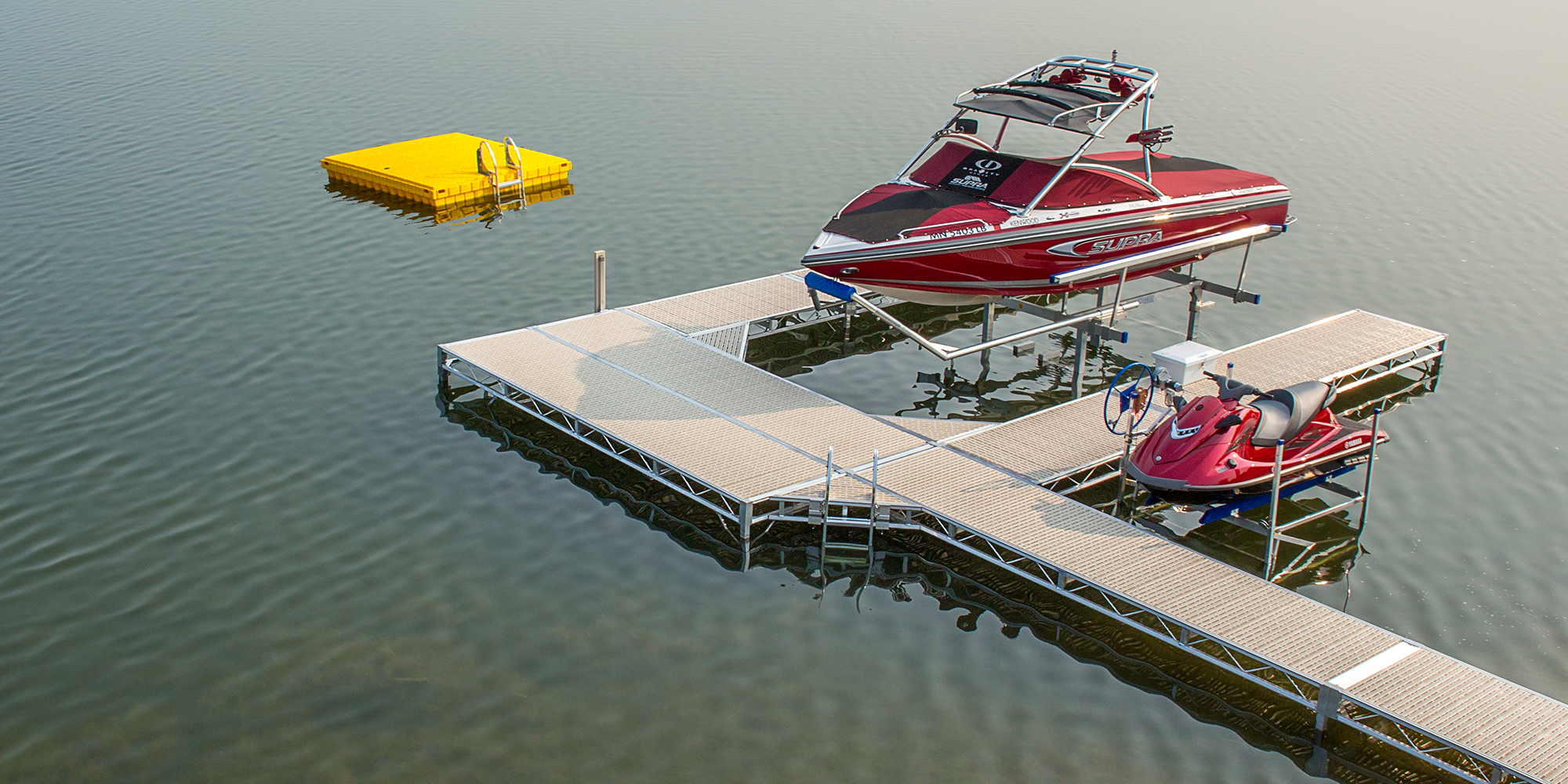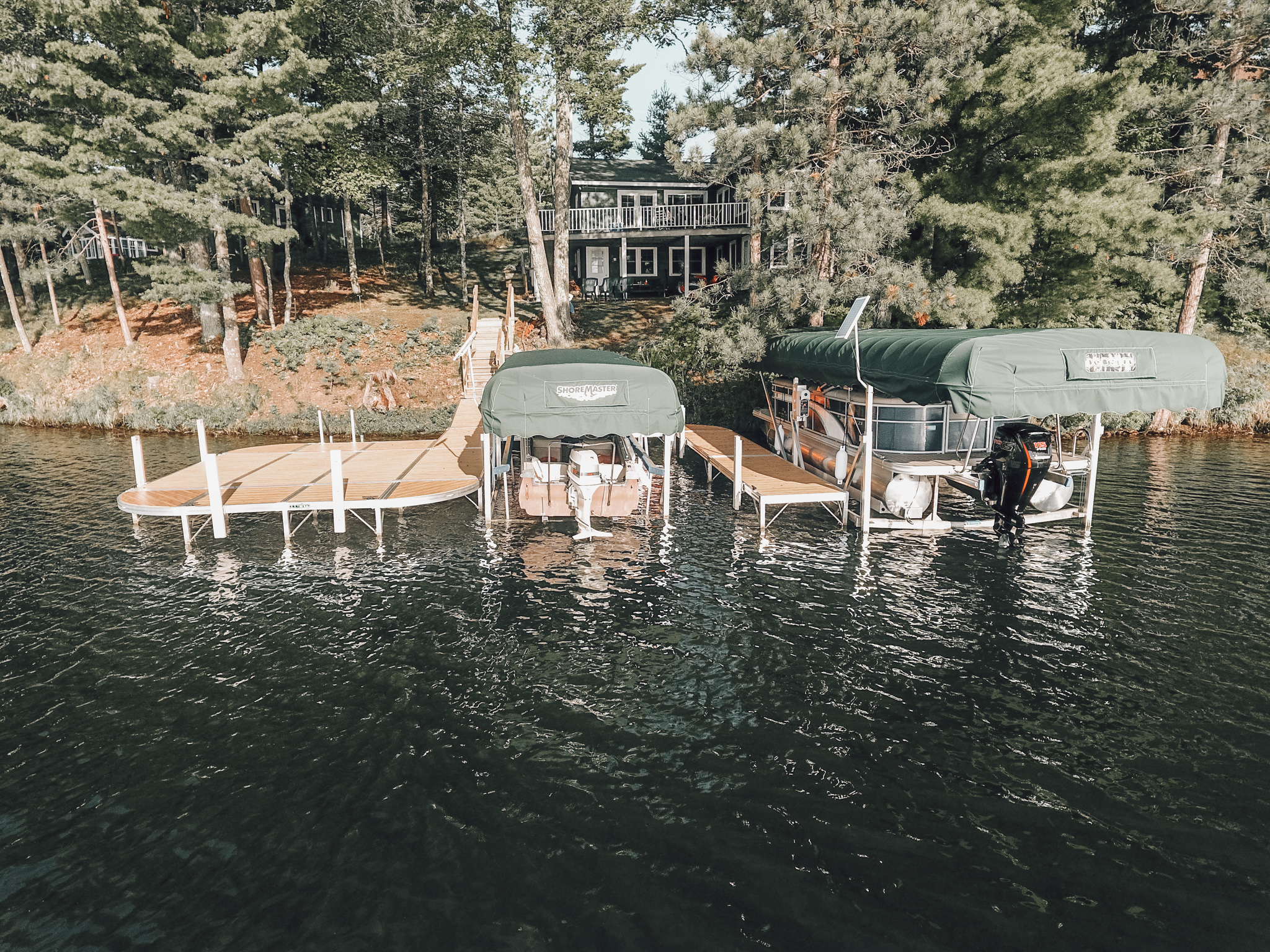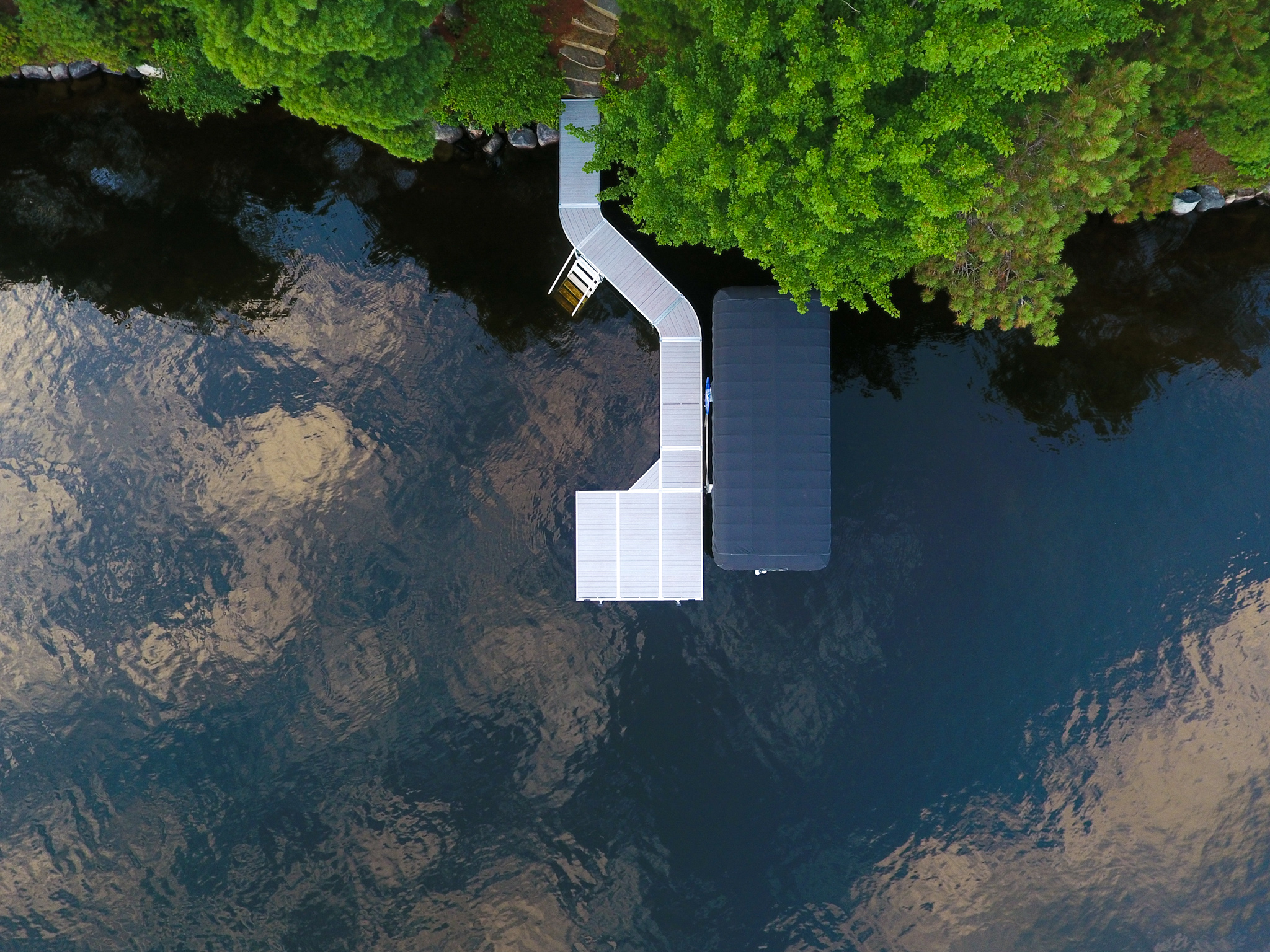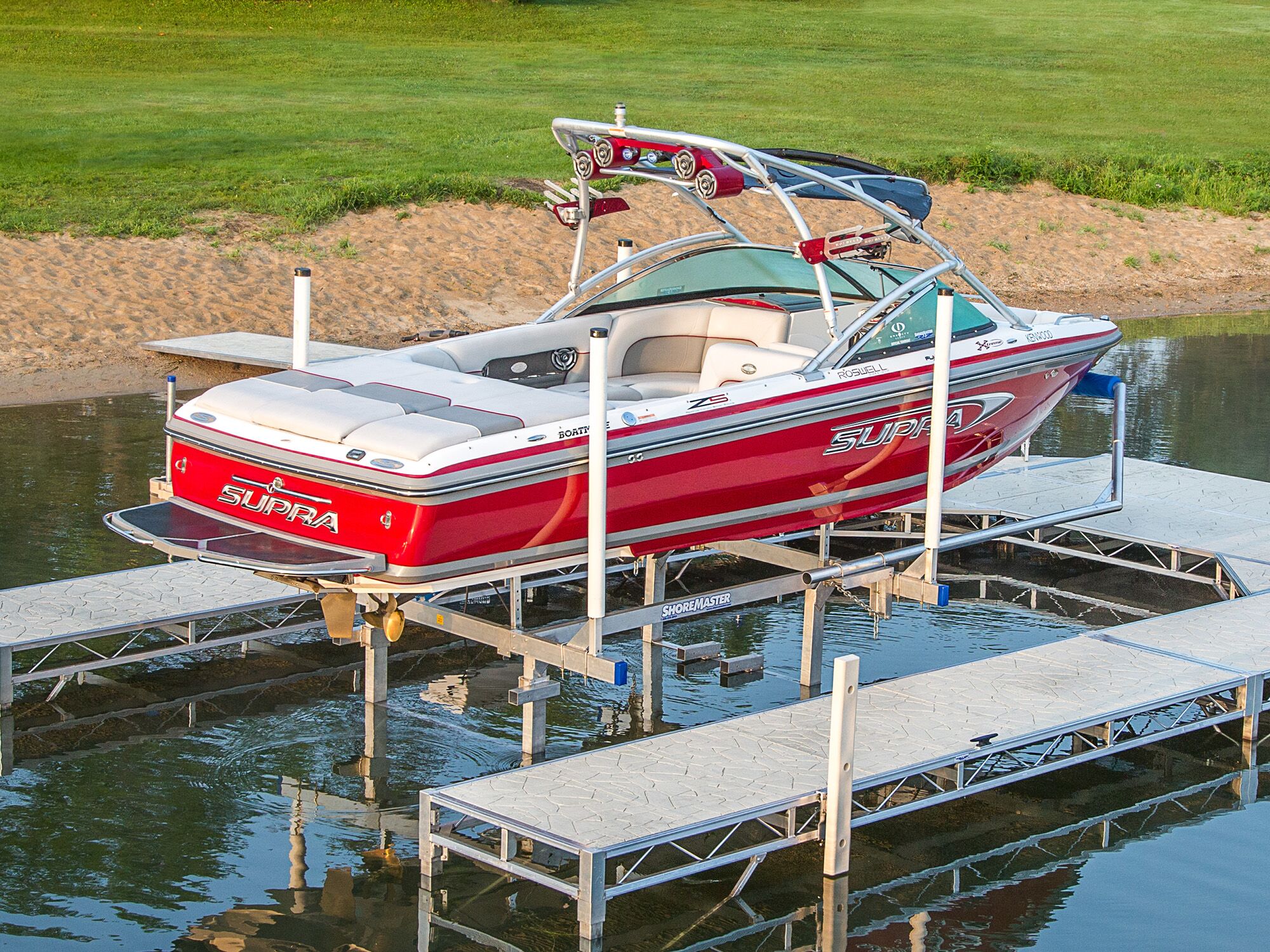August 1, 2024
Vertical vs. Hydraulic Remote Control Boat Lifts: Which Is Best for Your Dock?
Written by ShoreMaster Marketing
Remote control boat lifts have revolutionized the docking experience, offering boat owners unparalleled convenience and efficiency. These advanced docking solutions allow boat owners to store and launch their vessels effortlessly, providing superior protection from the elements while eliminating traditional pre-departure hassles.
Below, we explore the differences between vertical and hydraulic remote control boat lifts to help you choose the optimal solution for your needs.

Introduction to Remote Control Boat Lifts
For discerning enthusiasts, remote control boat lifts are a total game-changer. Towing a boat in and out of the water is time-consuming and physically demanding, which can detract from the overall boating experience or, even worse, discourage owners from launching their vessels. Even for those with a manual boat lift, turning the crank wheel is an exhausting, strenuous task no one looks forward to.
Remote control boat lifts offer a convenient and efficient way to raise and lower boats. Here’s an overview of how they can enhance your boating experience:
- Effortless operation: With a remote control, you can operate the lift from your boat as you approach the dock, making launching and retrieval a one-person operation. These systems also have a control box with straightforward buttons and toggle switches for effortless operation on and off land.
- Safety and security: Remote control boat lifts enhance safety by reducing the risk of accidents during docking and allowing you to lock the control box to prevent unauthorized use.
- Customizable settings: Some remote control boat lifts allow you to pre-set upper and lower limits corresponding to different tide levels or specific storage and loading elevations.
If a boat lift enhances the safety and protection of your vessel, operating it with a remote control elevates your overall boat ownership experience.
Understanding Vertical Boat Lifts
Vertical boat lifts raise vessels to greater heights compared to other lift designs, making them a popular choice among boat owners. Here’s an overview of how they work:
- Structure: This type of lift has a vertical frame that supports the boat. This typically consists of beams and cradles that hold the boat securely.
- Operation: Vertical lifts use a winch and a system of cables and pulleys to lift boats vertically, straight up and down. These lifts can be manually operated or automated using a boat lift motor.
- Advantages: Vertical boat lifts can operate in a wide range of water depths, making them ideal for areas with fluctuating water levels. Meanwhile, their relatively simple design makes them easier to maintain.
According to ASA Certified Sailor Will Pearce, vertical lifts that aren’t welded entirely can sway while raising the boat (BoatlifeHQ, n.d.). As pioneers of the welded aluminum boat lift, we’ve perfected our design to offer superior stability, reliability, and performance season after season. This has made ShoreMaster vertical boat lifts the most trusted lifting solution in the industry.
Exploring Hydraulic Boat Lifts
Hydraulic boat lifts use hydraulic systems to raise and lower vessels. A hydraulic pump sends pressurized fluid to the cylinders, which extend to raise the boat. When the pump releases the fluid, the cylinders contract to lower the boat. One hydraulic boat lift benefit includes a smooth and consistent operation, which makes them ideal for heavier vessels.
Here’s what you get when you choose a ShoreMaster hydraulic boat lift:
- Fast and quiet operation: ShoreMaster’s hydraulic system uses a bi-rotational, pressure-balanced pump, enhancing efficiency for fast and quiet lifting and lowering.
- Versatility: Our hydraulic lifts can accommodate bunks, guides, and rails to fit any watercraft style, including V-hulls, sailboats, and pontoons.
- Ease of ownership: The lift frame’s precision welded construction facilitates installation and provides superior durability over bolt-together lifts. Meanwhile, the lift’s traditional hydraulic design offers hassle-free operation that requires minimal maintenance.
On top of these, remote control operation is standard with all ShoreMaster hydraulic lifts for easy and convenient operation. Contact us today to find a boat lift dealer near me and to explore the best protection for your vessel.
Comparing Vertical and Hydraulic Boat Lifts
Here’s a side-by-side spec comparison of ShoreMaster vertical and hydraulic lifts to help you decide which docking solution suits your requirements.
|
Specifications |
Vertical Lift |
Hydraulic Lift |
|
Capacity |
3,000–7,000 pounds |
6,000–12,000 pounds |
|
Inside Width |
108"–120" |
108"–132" |
|
Lift Travel |
66" |
48"–60" |
|
Leg Length |
36" |
36" |
|
Overall Width |
120"–132" |
120"–149" |
|
Overall Length |
127" |
124"–233" |
|
Remote Control |
Optional |
Standard |
To further aid in your decision, here’s a side-by-side comparison of the key features of vertical and hydraulic boat lifts:
|
Feature |
Vertical Boat Lifts |
Hydraulic Boat Lifts |
|
Operation Mechanism |
Cable and pulley system |
Hydraulic pumps and cylinders |
|
Smoothness of Operation |
Good |
Excellent |
|
Installation Complexity |
Moderate |
Moderate to High |
|
Adaptability to Water Levels |
Excellent |
Good |
|
Maintenance Requirements |
Low to Moderate |
Moderate to High |
|
Cost |
Generally lower |
Higher |
|
Lifting Capacity |
High to Very High |
Moderate to High |
|
Visual Impact |
Moderate |
Low |
Sometimes, variables can be so close that choosing between these two lift designs can be tricky. Our vertical hydraulic boat lift combines the lifting capacity, operating speed, and convenience of hydraulic boat lifts with the flexibility and adaptability to various waterfronts that vertical boat lifts provide. Moreover, this system means you don’t have to worry about wear and tear or damage to cables and pulleys. It also requires less maintenance, adding to the convenience while reducing costs.
Contact us today for more information about the ShoreMaster vertical hydraulic boat lift and to learn if it’s the right solution for you.
Choosing the Right Remote Control Boat Lift for Your Dock
Here are the primary considerations for choosing the optimal boat lift for your specific watercraft and dock setup:
- Boat size and weight: Ensure the lift can handle your fully loaded boat, including all equipment and gear typically stored onboard. We recommend a lift with a capacity 20-25% higher than your boat’s wet weight. For reference, a watercraft with 600 gallons of fuel and 200 gallons of drinking water can add over 6,700 lbs to the boat’s weight (Ita Yachts Canada, 2024).
- Waterfront conditions: A vertical boat lift might be more suitable if your dock is in an area with considerable water level fluctuations. However, vertical boat lifts often require specific water depths for proper installation and operation and can be more challenging to install in locations with very soft or muddy bottoms.
- Aesthetic preferences: If you want a lift with minimal visual impact, hydraulic lifts typically have a lower profile compared to vertical lifts.
Still unsure about the appropriate lift for your needs? Visit your local ShoreMaster today to explore your options, get recommendations, and see the lifts in person.
References:
- BoatlifeHQ (n.d.) Difference between a vertical and cantilever boat lift (Explained). Retrieved from Difference between a vertical and cantilever boat lift (Explained) - BoatlifeHQ.com
- Ita Yachts Canada (July 4, 2024). The Importance Of Considering A Boat’s Weight When Buying A Boat. Retrieved from https://itayachtscanada.com/the-importance-of-considering-a-boats-weight-when-buying-a-boat/



